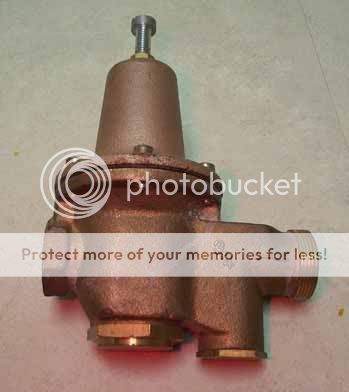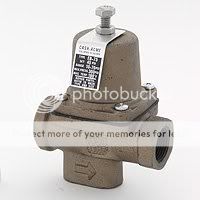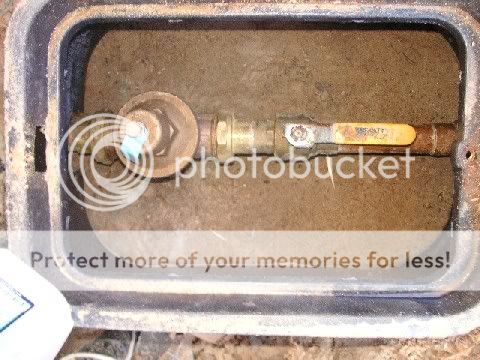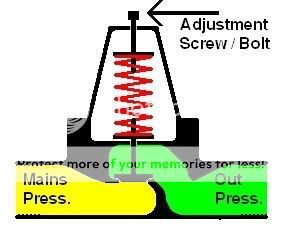theplantedtank
New Member
This is a water pressure regulator


Plumbing code calls for a pressure regulator to be installed in new homes if the pressure is 80 PSI or higher. The location is determined by the installer, but usually is either right behind the water meter in ground or where the water line enters the house.

Pressure Regulator in a Basement

Pressure Regulator installed in a Meter Access Box
Pressure regulators meant for Residential use are usually set at 60 PSI, but often lose calibration fast, especially if mounted vertically. They vary from 25 PSI when the bolt is all the way out, to 75 PSI when in all the way. It is NOT Recommended to run it in all the way immediately, just turn it in a few turns at a time and watch the amount you produce, or if you are lucky enough to have a pressure meter, watch the needle as you adjust the regulator.

Simple Diagram of a Pressure Regulator
A word of advice, do not exceed about 100 PSI if possible, it may damage rubber hoses and sensitive appliances, like washing machines, Automatic Ice Makers, Etc.


Plumbing code calls for a pressure regulator to be installed in new homes if the pressure is 80 PSI or higher. The location is determined by the installer, but usually is either right behind the water meter in ground or where the water line enters the house.

Pressure Regulator in a Basement

Pressure Regulator installed in a Meter Access Box
Pressure regulators meant for Residential use are usually set at 60 PSI, but often lose calibration fast, especially if mounted vertically. They vary from 25 PSI when the bolt is all the way out, to 75 PSI when in all the way. It is NOT Recommended to run it in all the way immediately, just turn it in a few turns at a time and watch the amount you produce, or if you are lucky enough to have a pressure meter, watch the needle as you adjust the regulator.

Simple Diagram of a Pressure Regulator
A word of advice, do not exceed about 100 PSI if possible, it may damage rubber hoses and sensitive appliances, like washing machines, Automatic Ice Makers, Etc.



